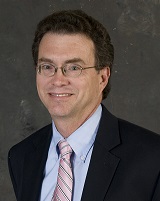1. What’s driving the slowdown in growth?
The ASC industry is no longer young. As the industry matures, markets inevitably become more saturated, there is less room for new centers and the rate of growth for ASCs historically isn’t sustainable.. While maturation is a natural stage for any industry, healthcare poses a unique set of challenges.
Reform has touched every corner of healthcare and its effects have yet to be fully realized. Over and above the maturity of the ASC market, health care reform efforts will have a major impact on ASC operations.
Another significant matter impacting ASCs and the opportunity for development of new facilities is the increase in hospital employment of physicians. Physicians are the backbone of the ASC industry and continued recruitment is the surest path to growth. But, the pool of independent physicians available for recruitment to ASCs or who can support or participate in the development of new ASCs continues to shrink.
 While ASCs may struggle to find new physicians to provide growth, that’s not the only stressor. “The [slow-down] trend is exacerbated by the proliferation of high deductible plans, which are impacting utilization,” says Matt Searles, a partner with Merritt Healthcare. It may take patients longer to meet the higher deductible which could cause them are put off much needed elective surgery altogether. These coverage issues both impact volumes and revenues for existing ASCs and make new development projects all the more challenging
While ASCs may struggle to find new physicians to provide growth, that’s not the only stressor. “The [slow-down] trend is exacerbated by the proliferation of high deductible plans, which are impacting utilization,” says Matt Searles, a partner with Merritt Healthcare. It may take patients longer to meet the higher deductible which could cause them are put off much needed elective surgery altogether. These coverage issues both impact volumes and revenues for existing ASCs and make new development projects all the more challenging
2. What does this mean for individual ASCs?
While fewer physicians and less volume to go around means de novo activity will dramatically slow, it also means individual ASCs will have to face the realities of a changing industry.
The level of difficulty ASCs face varies from market to market. “Some markets are faring better than others. For instance, certificate of need states where there are many fewer ASCs per capita,” says Mr. Searles. On the other hand, ASCs States without CON regulation face intensified saturation and competition.
“Trends always change,” says John Newman, senior vice president and general counsel of Constitution Surgery Centers. “Do I think we will go back to the level of growth we saw early on? No, but there always is a place in any market for low-cost, high quality delivery vehicles such as ASCs. The future will probably involve more creative application of ASC resources as opposed to simply involving the creation of independent freestanding ASCs.” ASC development will take on a variety of forms, such as joint ventures, and operations in collaborations with other providers and facilities. ASCs will have to address how their operations mesh with broader delivery systems such as accountable care organizations. ASCs must form new alliances and be prepared to address new coverage and reimbursement initiatives such as narrow networks or accountable care organizations. Though freestanding ASCs that have carved out market niches may enjoy continued success, they may no longer be the most common type of ASC developed, and all ASCs must address the emerging market pressures posed by healthcare reform and mature marketplaces.
in any market for low-cost, high quality delivery vehicles such as ASCs. The future will probably involve more creative application of ASC resources as opposed to simply involving the creation of independent freestanding ASCs.” ASC development will take on a variety of forms, such as joint ventures, and operations in collaborations with other providers and facilities. ASCs will have to address how their operations mesh with broader delivery systems such as accountable care organizations. ASCs must form new alliances and be prepared to address new coverage and reimbursement initiatives such as narrow networks or accountable care organizations. Though freestanding ASCs that have carved out market niches may enjoy continued success, they may no longer be the most common type of ASC developed, and all ASCs must address the emerging market pressures posed by healthcare reform and mature marketplaces.
3. What does this mean for ASC companies?
Individual freestanding ASCs may have been the start of the industry, but ASC management and development companies ranging from regional leaders to national chains have increasingly emerged as important forces in the industry. The reduction in the number of new ASCs and challenges standing in the way of existing center growth forces a shift in ASC management company strategies as well.. “There will be fewer new ASCs developed,” says Mr. Searles. “However, we see great opportunity in the management of underperforming centers and advisory services to hospital systems looking to streamline operations.”
The growth slowdown affects companies much in the same way it affects freestanding centers: fewer physicians and shrinking volumes. “Without growth tied to volume they are taking out a sharper pencil. They [ASC companies] are looking more closely at case mix, focusing on specialties with higher profit margins and seeking to collaborate with others- be it hospitals, recovery care centers or others as a means of expanding the opportunities for utilization of ASCs,” says Mr. Newman. Companies and solo centers alike will be looking for new partnerships and strategies to achieve new pathways to success.
4. Can we expect to see an uptick in M&A activity?
“Consolidation is a common characteristic of any maturing industry,” says Mr. Searles. This has certainly been true for the ASC industry. Joint ventures continue to be attractive, and mergers and acquisitions have even begun to reshape the industry at the corporate level. Surgery Partners spent $792 million to acquire Symbion and, AmSurg created waves with its $2.35 billion acquisition of anesthesia provider Sheridan Healthcare – a bold deal setting a precedent for diversified ASC company strategy.
“It is hard to predict the large deals,” says Mr. Newman. “But, a lot of smaller niche players in particular markets or clinical specialties may become prime acquisition targets.” ASC companies, not to mention hospitals and health systems, will be searching for ASCs that can demonstrate records of delivering low-cost, high-quality care in desirable specialties.
5. Are there still opportunities for ASC growth?
Though industry growth may no longer be explosive as it once was, that does not mean it’s no longer possible. “There are and will be surgeons available to recruit in most markets,” says Mr. Searles. “Apart from physician recruitment, other avenues for growth are improving payer contracts, adding higher acuity cases and focusing on operational efficiency.” The new ASC market will give rise to the best and the brightest centers and management companies.
More articles on transactions and valuation issues:
6 recently opened or expanded ASCs
5 articles on ASC physician buy-in
Crozer-Keystone ASC acquisition boosts surgical volume 19%: Why hospitals & health systems want in on the ASC industry
